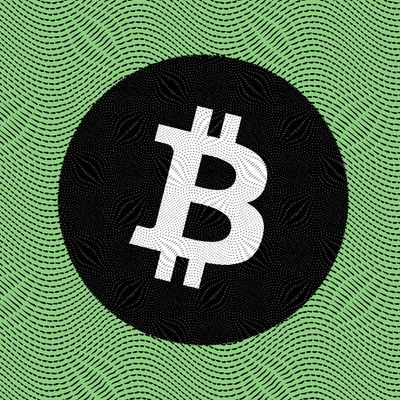
Photo-Illustration: Intelligencer
For the entirety of crypto’s existence, a large part of digital currency’s appeal was how strange it all was. From its 2008 inception, bitcoin was this new kind of anti-government money, perfect for someone to buy drugs with online anonymously, even as it was susceptible to getting lost or thrown out on garbage day. There were the copycat fads — the “initial coin offering” bubble of 2017, the shitcoin mania of 2021 — as well as the truly weird and dumb stuff, like the NFTs of monkeys that were, briefly, fodder for the art world. Whatever your opinion of all these things, they made many people very, very rich — at least for a little while, on paper. This year, though, has been different. After last year’s market collapse and last week’s conviction of crypto-fraud kingpin Sam Bankman-Fried, what’s weird about it all isn’t some new trend or some new offense to good taste. On Thursday, crypto had one of its best days in 18 months, and it has everything to do with abandoning its rebel origins and getting approval from Wall Street giants and government regulators.
A single bitcoin rose briefly to nearly $38,000 on Thursday, the highest that it’s been since the early days of the total market collapse triggered by the vaporization of two of the world’s largest cryptocurrencies, terraUSD and luna, in early 2022. Why did it rise from the dead all of a sudden? Crypto investors have a big new story to tell — and since the price of bitcoin isn’t tied to a physical asset, like oil, or the economic might of a country, like the U.S. dollar, it lives and dies by how persuasive its story is on any given day. This time, the narrative seems to be about crypto growing up and getting a haircut, a suit, and a real job — on Wall Street. Specifically, the Securities and Exchange Commission appeared to be getting closer to green-lighting an exchange-traded fund from investment behemoth BlackRock that would allow investors to buy bitcoin as easily as they buy the S&P 500. (An ETF trades just like a stock but can represent an index or commodity or a nearly endless variety of other financial bets.) And it wasn’t just bitcoin. Ethereum, the world’s second-most-popular crypto, was also reaching highs not seen since April, topping $2,000 per token, after BlackRock registered a corporate entity in Delaware for an ethereum ETF.
For Wall Street to finally start trading ETFs of bitcoin or ethereum would truly begin a new era in the world of cryptocurrencies. ETFs are part of the finance industry’s lifeblood, and an industry unto itself that, as of last year, was worth $6.5 trillion. At its core, a crypto ETF would make it easier for financial institutions (your pensions, mutual funds, hedge funds, and the like), and the average 401(k) holder, to easily trade and profit from the digital currencies without having to worry about encryption keys, or getting hacked, or anything like that. (At least, not directly. If BlackRock got its bitcoin hacked, though, that would be very bad.) Bitcoin ETFs have largely been a pipe dream for the last ten years, since the Winklevoss twins first tried to get government approval for one. (The SEC rejected it four years later.) What changed recently was a lawsuit from Grayscale, a company owned by Barry Silbert’s Digital Currency Group, a big (if currently troubled) player in the crypto space. In August, an appeals court ruled that the SEC had arbitrarily denied Grayscale’s application for its own ETF, which would have used many of the same market-surveillance and safety protocols that other funds used. Last month, the SEC said it wouldn’t appeal the decision, making the appearance of an ETF all but assured. “This was fully expected in my eyes and was just a matter of when, not if,” Bloomberg Intelligence analyst James Seyffart said. “But BlackRock’s name is obviously huge and just seeing this registration in Delaware sent ether prices skyrocketing.”
All this appears to fly in the face of what made crypto so … crypto-y. This was, after all, the money that was most closely associated with Occupy Wall Street and that Jamie Dimon has called a “fraud.” The spike in prices is of the kind that would typically come from secret, anonymous Telegram “pump” groups that would disappear just as soon as they made their profits. That its value is getting pumped because regulators are now okay with it and the likes of BlackRock, which manages over $10 trillion in assets, are getting in on it, is deeply weird and hilarious — not only because it’s the opposite of what it symbolized for so long, but because … what’s the difference? For most people who own a bitcoin, what matters is that the price is going to go higher (a.k.a. “number go up”), not any of the high-flying rhetoric about its ability make each holder a sovereign wealth fund unto themselves. Maybe this is why Gary Gensler, the SEC chair and chief antagonist of the crypto markets, came out recently and suggested that FTX could soon get relaunched as a crypto exchange, now that Bankman-Fried is no longer a threat. After his remarks, the price of FTX’s digital currency, long assumed to be dead by most investors, spiked by 90 percent — one of its best days ever.






